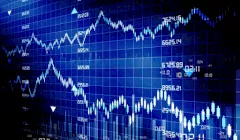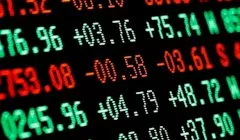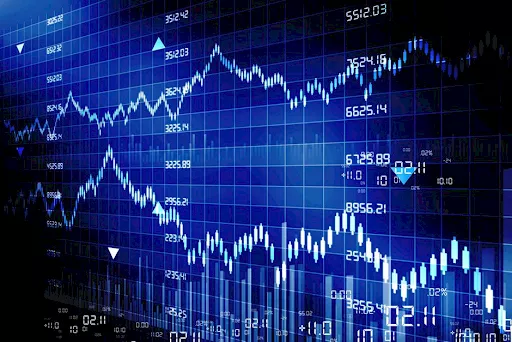Resources
How safe are ETF’s?
Promoted by

ETFs have grown exponentially in size and trade volume. It is important to understand them and their associated risks, in particular the liquidity of the underlying assets.
How safe are ETF’s?
Promoted by

ETFs have grown exponentially in size and trade volume. It is important to understand them and their associated risks, in particular the liquidity of the underlying assets.

The first Exchange Traded Fund (ETF) was launched almost 25 years ago in January 1993. Based on the S&P 500, a feature of this listing was its tracking of one of the world’s most recognised and most liquid equity indices. The associated S&P 500 (and subsequently E-mini) futures contract remains one of the largest and most liquidity derivatives contract in existence.
With ETFs increasingly dominating market turnover, it is important to understand them and recognise any risks involved. Simply stated, ETFs are index / rules-based funds, which typically track an underlying index. Costs are low, and they allow easy switching between asset classes, sectors and investment styles — all of which can drive investment returns. The question, as with many good financial ideas, is whether the ETF can be taken too far, and whether it will change the nature of financial markets.
Exchange traded funds are increasingly starting to take over some markets, especially in the US. Shares in Apple, the world’s biggest and most heavily traded company, turn over more than $3bn each day. But that is dwarfed by the biggest ETF, State Street’s SPDR S&P 500, which trades more than $14bn each day. Five of the world’s seven most heavily traded equity securities are ETFs. It is not just in trading that ETFs dominate. Their assets under management were negligible 20 years ago, but now exceed $3tn.
Figure 1. Global ETF asset growth
Source: FT

ETFs account for nearly one-half of all trading in US stocks. Typically, the annualised turnover rates for stocks and ETFs are very different: stock turnover, 120%; ETF turnover, 880%. The implications of this rapid trading — which some would call speculation — have yet to be fully examined.
Locally, the first Australian ETF commenced trading on the ASX in August 2001. It was based on the S&P/ASX 200 equity index, aligned with the primary SPI 200 futures contract, where again underlying liquidity was naturally supported by market participants and index arbitragers.
Structured in this way, a feature of these original ETFs was the considerable liquidity underpinning the primary equity index itself, coupled with market participant / arbitragers ensuring efficient pricing.
From these early beginnings, the ETF industry has seen spectacular growth. The breadth and depth of ETFs now available to investors has too grown at a frenetic pace. Unlike these pioneering ETFs tracking established indices, the presence of an associated liquid futures contract and efficient pricing via index arbitragers is no longer a prerequisite for listing. Rather, market makers are typically incentivised to provide an acceptable bid-ask spread based on the basket of underlying securities. As a result, there continues to be is a natural association between ETFs and deep liquidity pools. ETFs now cover almost every imaginable sector, and many have esoteric characteristics, in some cases including multiple layers of leverage and negative correlations to specific asset types.
Figure 2. No. of exchange traded funds and products
Source: FT
Notwithstanding market making incentives, there is no alchemy in the underlying liquidity of ETF (or any other Fund’s) constituents. Without the backing of a liquid futures contract and presence of market participants / arbitragers, market making incentive structures can only go so far in times of market dislocation. Where ETF inflows are maintained, the prevailing market environment is benign and index/ETF marginal buying continues (and market makers continue to provide liquidity), things go smoothly. Where these conditions are not maintained, we enter a brave new world of ETF investing and potentially test the limits of liquidity and implied pricing efficiency in times elevated market uncertainty. Caveat emptor …
For more detailed stock analysis and investment insights, access our Investing Report here.

Sponsored features
Dissecting the Complexities of Cash Indices Regulations: An In-Depth Analysis
Introduction In recent years, the world of finance has seen a surge of interest in cash indices trading as investors seek potential returns in various markets. This development has brought increased ...Read more

Sponsored features
The Best Ways to Find the Right Trading Platform
Promoted by Animus Webs Read more

Sponsored features
How the increase in SMSF members benefits business owners
Promoted by ThinkTank Read more

Sponsored features
Thinktank’s evolution in residential lending and inaugural RMBS transaction
Promoted by Thinktank When Thinktank, a specialist commercial and residential property lender, recently closed its first residential mortgage-backed securitisation (RMBS) issue for $500 million, it ...Read more

Sponsored features
Investors tap into cyber space to grow their wealth
Promoted by Citi Group Combined, our daily spending adds up to opportunities for investors on a global scale. Read more

Sponsored features
Ecommerce boom as world adjusts to pandemic driven trends
Promoted by Citi Group COVID-19 has accelerated the use of technologies that help keep us connected, creating a virtual supply chain and expanded digital universe for investors. Read more

Sponsored features
Industrial property – the silver lining in the retail cloud
Promoted by ThinkTank Read more

Sponsored features
Why the non-bank sector appeals to SMSFs
Promoted by Think Tank Read more

Sponsored features
Dissecting the Complexities of Cash Indices Regulations: An In-Depth Analysis
Introduction In recent years, the world of finance has seen a surge of interest in cash indices trading as investors seek potential returns in various markets. This development has brought increased ...Read more

Sponsored features
The Best Ways to Find the Right Trading Platform
Promoted by Animus Webs Read more

Sponsored features
How the increase in SMSF members benefits business owners
Promoted by ThinkTank Read more

Sponsored features
Thinktank’s evolution in residential lending and inaugural RMBS transaction
Promoted by Thinktank When Thinktank, a specialist commercial and residential property lender, recently closed its first residential mortgage-backed securitisation (RMBS) issue for $500 million, it ...Read more

Sponsored features
Investors tap into cyber space to grow their wealth
Promoted by Citi Group Combined, our daily spending adds up to opportunities for investors on a global scale. Read more

Sponsored features
Ecommerce boom as world adjusts to pandemic driven trends
Promoted by Citi Group COVID-19 has accelerated the use of technologies that help keep us connected, creating a virtual supply chain and expanded digital universe for investors. Read more

Sponsored features
Industrial property – the silver lining in the retail cloud
Promoted by ThinkTank Read more

Sponsored features
Why the non-bank sector appeals to SMSFs
Promoted by Think Tank Read more









